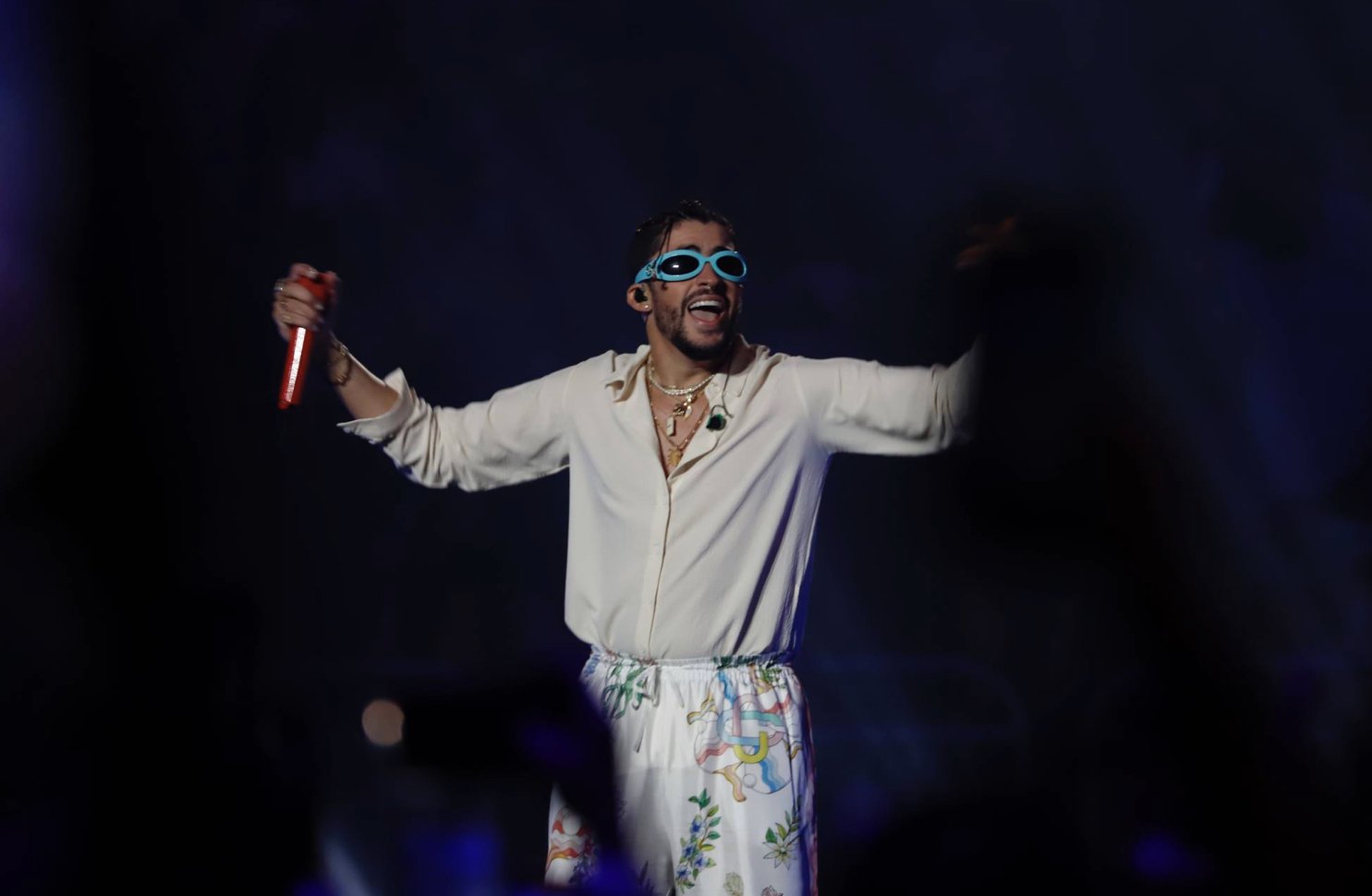Bad Bunny Knows Fashion
Bad Bunny kicked off his “Un Verano Sin Ti” world tour at his homeland, Puerto Rico, in a three day concert extravaganza. Where almost all collaborations artists from his latest top hit album performed. Among the special guests included Bomba Estéreo, Raúl Alejandro, Jay Cortez and Young Miko. An event filled with fashion, music, dance and love, as many of the performing guests took to social media to express their gratitude towards Bad Bunny´s support, which got every fan that more excited for his upcoming presentations.
Courtesy of El Universo
But who is this international reggaeton-pop star sensation?
Courtesy of Vogue
Bad Bunny, a Puerto Rican native, has become the most streamed artist on platforms like Spotify and Apple Music globally. Back in 2020, his single Dakiti was earning around 3 million streams each day, surprising established artists like Ariana Grande. This comes as no surprise as Latin artists such as J Balbina, Karol G, Danna Paola, Maluma and Ozuna are on top of the music charts, bringing Latin American music, culture and rhythm to places where it hasn’t before. Although reggaetón has been around for decades now, mainstream culture is starting to recognize its musical quality and rich history.
Reggaeton’s history is one that narrates the struggles of marginalized Latin American countries and the struggles of low-income barrios, remember Gasolina by Daddy Yankee? The song that introduced the genre to the world. If you are not a Spanish speaking person, reggaetón's lyrics are often borderline aggressive, sexist, violent and diminishing towards women. Such lyrics have become part of heavy controversial discussions, enter Bad Bunny. I am not saying Bad Bunny is perfect or that his lyrics aren’t purple washing or not, but he has definitely used his music for some good,. Like in his songs Andrea or Yo Perreo Sola where he raps about how women want to stay alive referencing the millions of feminicidios that occur in Latin America and the rest of the world and how women want to be respected.
Courtesy of Billboard, Un Verano Sin Ti artwork
Music, especially reggaeton, is always accompanied by fashion. As each genre belongs and alludes to a specific set of values, history and culture. Bad Bunny has definitely tipped his toes in the fashion industry, not only by becoming the face of Parisian high-fashion brand Jacquemus but by breaking the stereotypical box of how a reggaeton rapper should look like. Gender norms are strong especially in Latin America where men need to be “strong and to avoid all things femenine”, including compassion, empathy or tolerance.
Courtesy of HighSnobiety
It seems that in every new generation of artists there is one that comes and shakes things up, whether it be by wearing nail polish, sequins, dressing in drag and wearing dresses. The world has seen Bowie, Prince, Harry Styles, Pink, Elton John, Janelle Monae and now Bad Bunny. So, if we have seen this before why does it come as a shock or most importantly why is it not an accepted reality that people can dress outside gender norms?
Courtesy of Vogue
The sad reality is that the music industry is still plagued with sexism and homophobia, that is why seeing artists that push for change. (Again, in no way am I saying Bad Bunny is the ultimate artist that uses his platform for change and advocacy but we can't deny that his fashion choices and aesthetic contribute to seeing masculinity and femininity different from the new generations).
Fashion is one of the main channels where masculinity is expressed, tradition limits how it can be expressed and Bad Bunny certainly does not care.
Along with his stylist Storm Pablo and his repertoire of tiny sunglasses, Benito Ocasión Martinez has been delivering look after look. His style is heavily influenced by street wear, sometimes 90’s, sometimes grunge, modern, masculine, feminine, camp, mainstream he does it all. An androgynous style that shifts, from wearing the ever popular “Yeezy style” puffer jackets to dressing up in full drag. Bad Bunny is the perfect example to showcase how heterosexual masculinity can be broken and reinterpreted through fashion choices that aren limited to gender or trends.
“Going shopping with my mom was one of my favorite things because I would get lost in the women’s department, seeing the combinations, the colors, the cuts, the designs. And then it was my turn to buy clothes and it was boring as hell. The same jeans and T-shirts, jeans and T-shirts in different sizes. The women had it all!” -Bad Bunny













